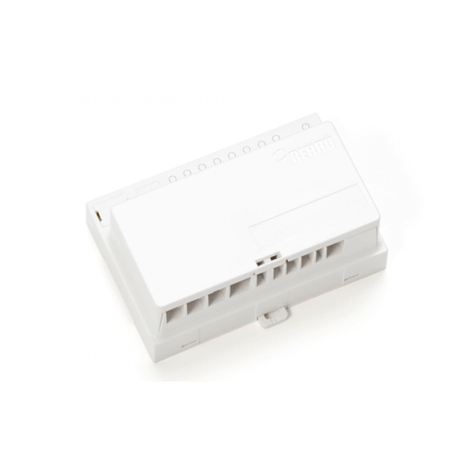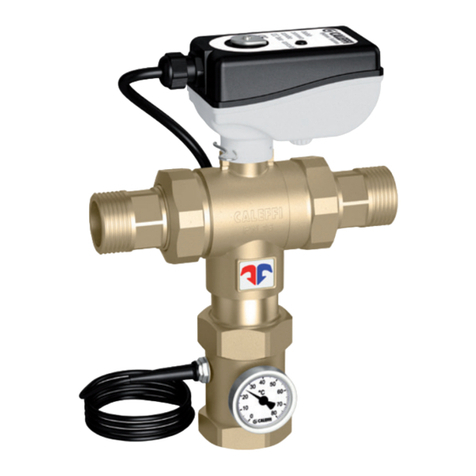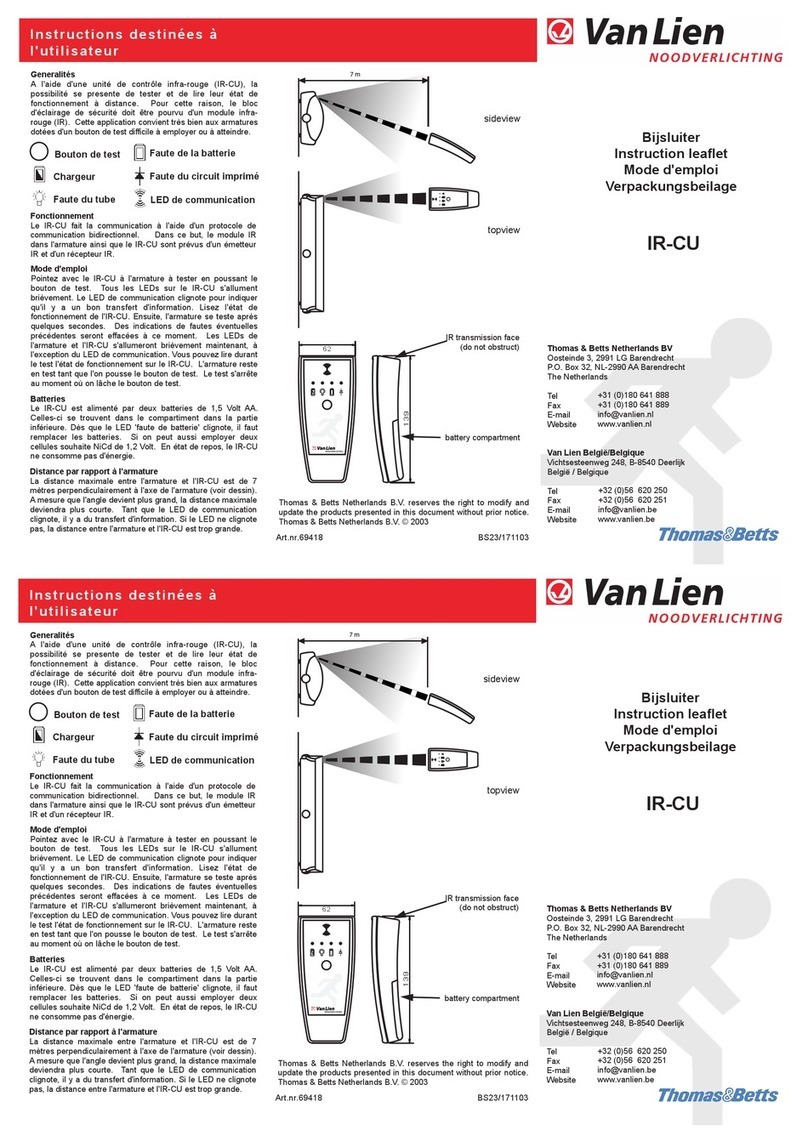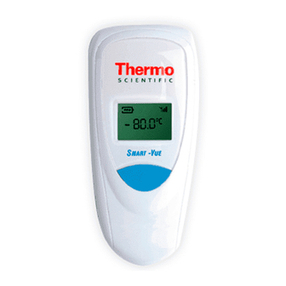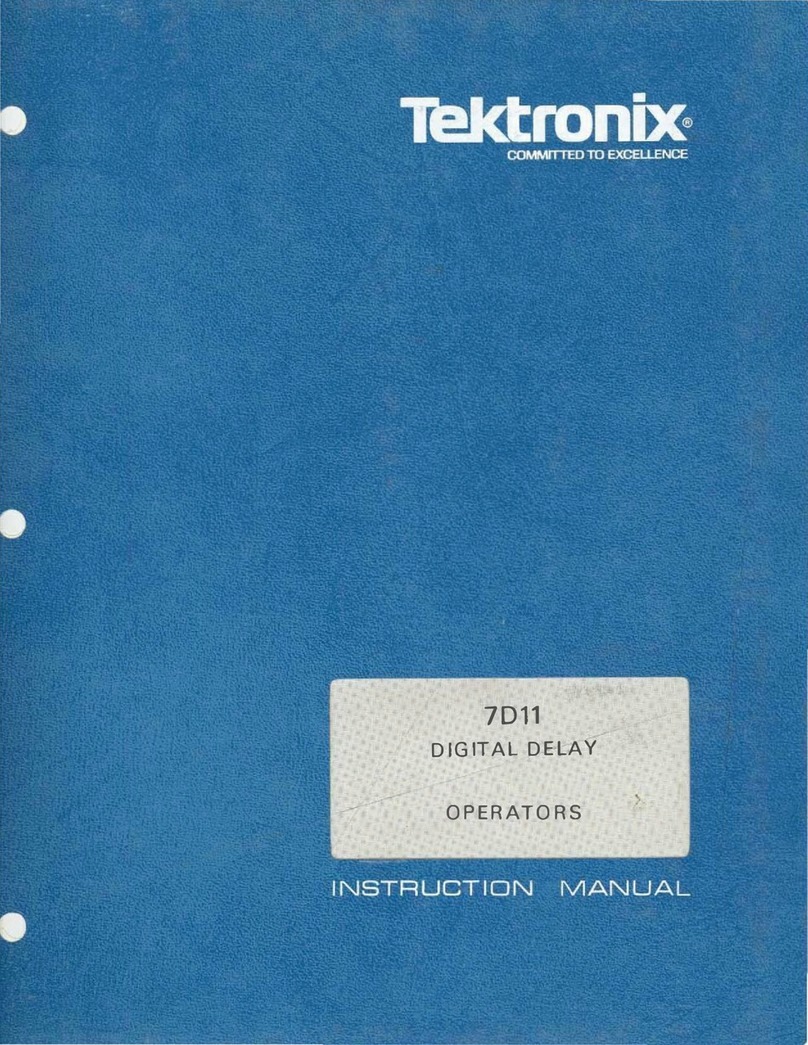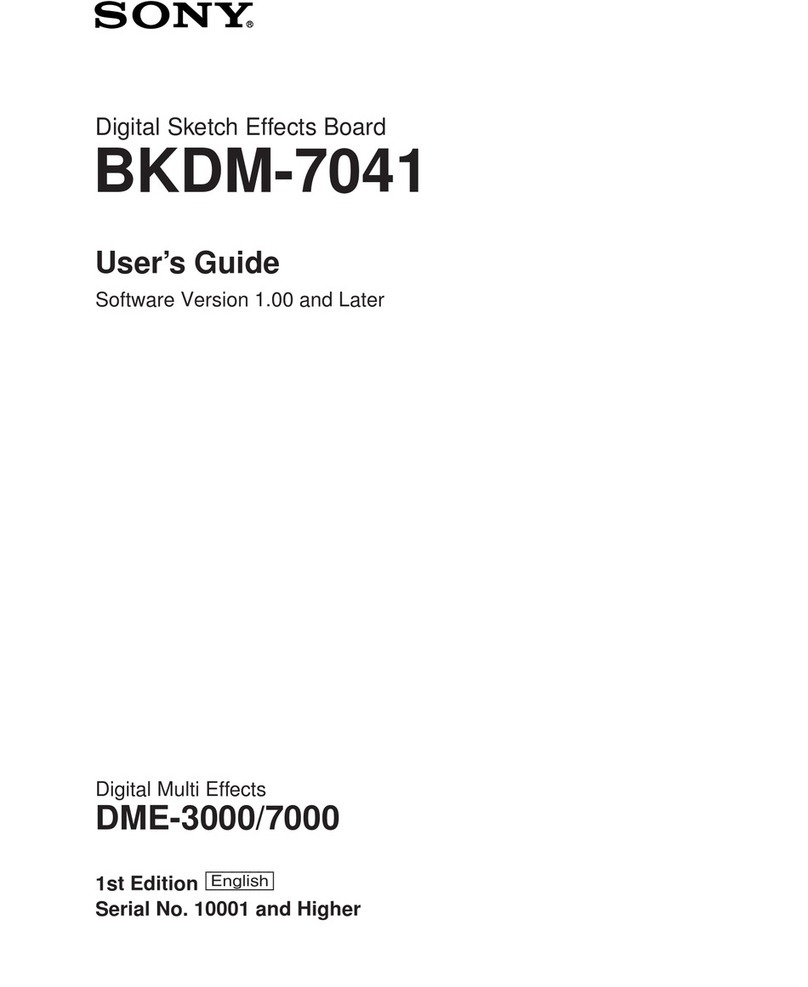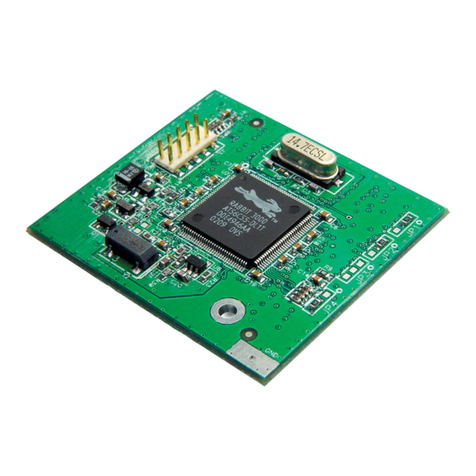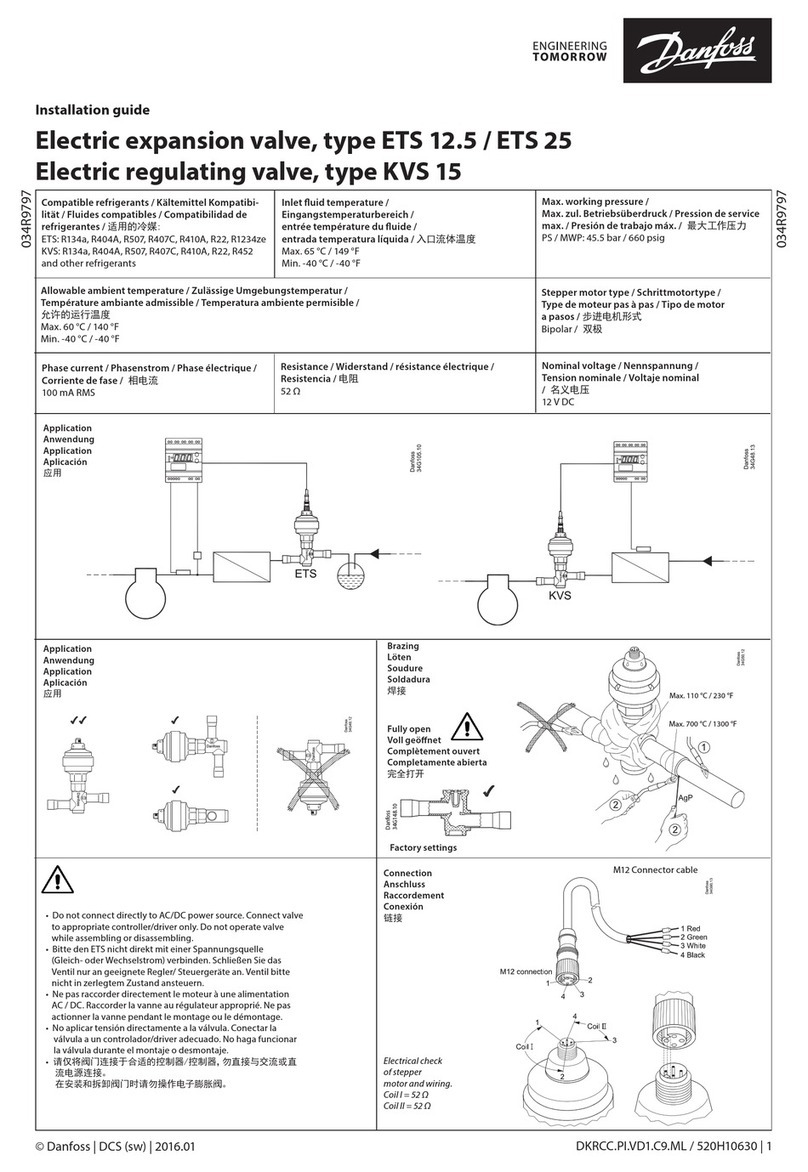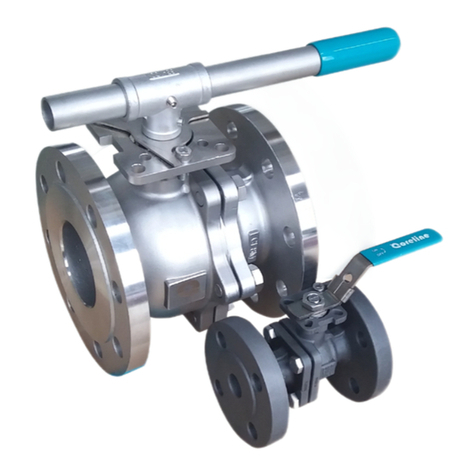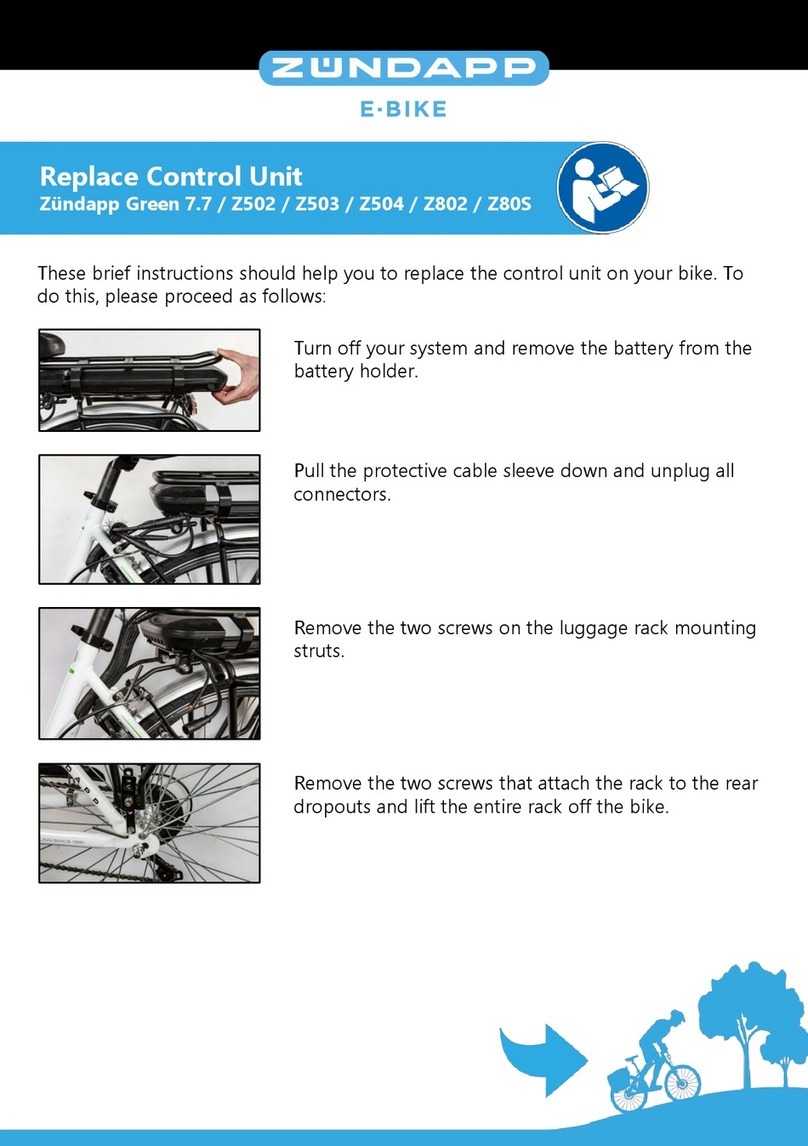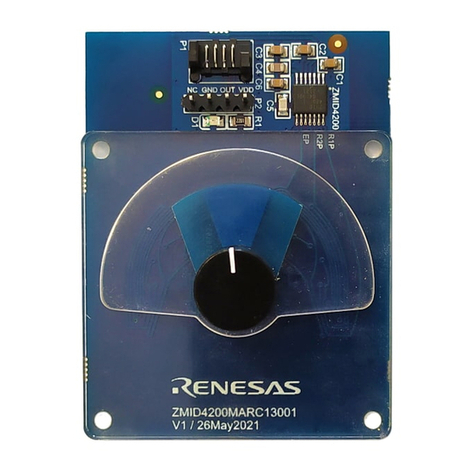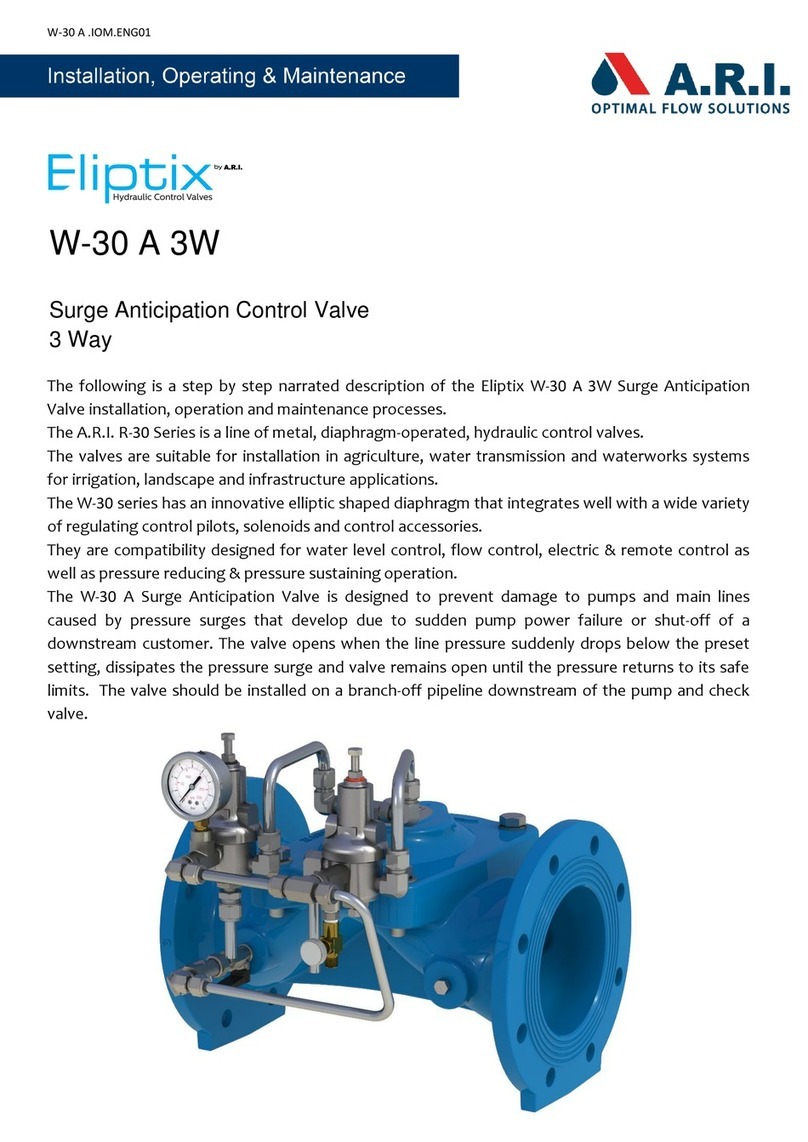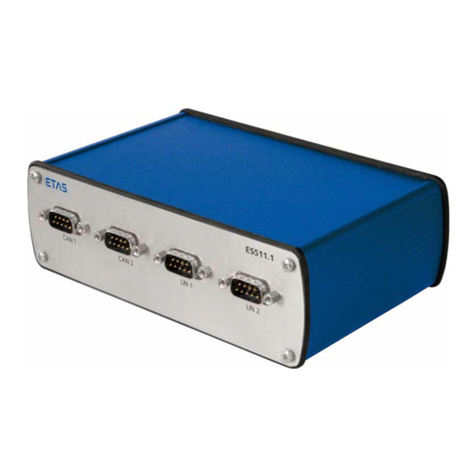Maestro Wireless Solution A5100-A User manual

GPS/GLONASS Receiver A5100-A
A Description of Maestro’s
GPS/GLONASS Receiver Module A5100-A
User’s Manual
Version 1.0

V1.0-Mar-14
User’s Manual
Page 2 of 43
Revision History
Rev.
Date
Description
0.1
10-29-13
First draft.
0.2
02-10-14
Updates according to DV samples.
1.0
03-03-14
Updates Current data and add some picture
mm-dd-yy
Name
Date
Signature
Written by
Happy wen
03-03-14
H W
Checked by
Sam Law, Matthieu
03-03-14
S L,M
Approval by
Frank Tang, Calvin Yau
03-03-14
F T,C Y

V1.0-Mar-14
User’s Manual
Page 3 of 43
Disclaimer
THIS DOCUMENT CONTAINS PROPRIETARY INFORMATION OF MAESTRO
WIRELESS SOLUTIONS LIMITED. IT MAY NOT BE COPIED OR TRANSMITTED
BY ANY MEANS, PASSED TO OTHERS, OR STORED IN ANY RETRIEVAL
SYSTEM OR MEDIA, WITHOUT PRIOR CONSENT OF MAESTRO OR ITS
AUTHORIZED AGENTS.
THE INFORMATION IN THIS DOCUMENT IS, TO THE BEST OF OUR
KNOWLEDGE, ENTIRELY CORRECT. HOWEVER, MAESTRO CAN NEITHER
ACCEPT LIABILITY FOR ANY INACCURACIES, OR THE CONSEQUENCES
THEREOF, NOR FOR ANY LIABILITY ARISING FROM THE USE OR
APPLICATION OF ANY CIRCUIT, PRODUCT, OR EXAMPLE SHOWN IN THE
DOCUMENT.
THE PRODUCT (HARD- AND SOFTWARE) DESCRIBED IN THIS
DOCUMENTATION IS NOT AUTHORIZED FOR USE IN LIFE SUPPORT
DEVICES OR SYSTEMS WITHOUT THE EXPRESS WRITTEN APPROVAL OF
MAESTRO.
THIS DOCUMENT MAY PROVIDE LINKS TO OTHER WORLD WIDE WEB SITES
OR RESOURCES. BECAUSE MAESTRO HAS NO CONTROL OVER SUCH SITES
AND RESOURCES, MAESTRO SHALL NOT BE RESPONSIBLE FOR THE
AVAILABILITY OF SUCH EXTERNAL SITES OR RESOURCES, AND DOES NOT
ENDORSE AND IS NOT RESPONSIBLE OR LIABLE FOR ANY CONTENT,
ADVERTISING, PRODUCTS, OR OTHER MATERIALS ON OR AVAILABLE FROM
SUCH SITES OR RESOURCES. MAESTRO SHALL NOT BE RESPONSIBLE OR
LIABLE, DIRECTLY OR INDIRECTLY, FOR ANY DAMAGE OR LOSS CAUSED
OR ALLEGED TO BE CAUSED BY OR IN CONNECTION WITH USE OF OR
RELIANCE ON ANY SUCH CONTENT, GOODS OR SERVICES AVAILABLE ON
OR THROUGH ANY SUCH SITE OR RESOURCE.
MAESTRO RESERVES THE RIGHT TO CHANGE, MODIFY, OR IMPROVE THIS
DOCUMENT OR THE PRODUCT DESCRIBED HEREIN, AS SEEN FIT BY
MAESTRO WITHOUT FURTHER NOTICE.

V1.0-Mar-14
User’s Manual
Page 4 of 43
Table of Contents
1 Introduction ........................................................................................................ 6!
1.1 Feature Overview.............................................................................................. 6!
1.2 Characteristics Overview................................................................................... 7!
1.3 RoHS and Lead-Free Information ..................................................................... 7!
1.4 Label ................................................................................................................. 8!
1.5 Characteristics .................................................................................................. 9!
1.5.1 GPS & GLONASS Characteristics ............................................................................. 9!
1.5.2 Mechanical Characteristics ........................................................................................ 9!
1.6 Handling Precautions ........................................................................................ 9!
2 Ordering Information ....................................................................................... 10!
2.1 GPS/GLONASS Receiver A5100-A ................................................................ 10!
2.2 Packing of the A5100-A .................................................................................. 10!
2.3 Additional Equipment ...................................................................................... 12!
3 Quick Start ........................................................................................................ 13!
3.1 Minimum Configuration ................................................................................... 13!
3.2 Antennas ......................................................................................................... 15!
3.2.1 Passive Antennas..................................................................................................... 15!
3.2.2 Active Antennas ....................................................................................................... 15!
3.3 Serial Port Settings ......................................................................................... 16!
3.3.1 Change Serial Port setting ....................................................................................... 16!
3.4 Improved TTFF ............................................................................................... 16!
3.5 Self-start Configuration ................................................................................... 17!
4 Mechanical Outline........................................................................................... 19!
4.1 Details Component Side A5100-A .................................................................. 19!
4.2 Details Solder Side A5100-A........................................................................... 20!
5 Pin-out Information .......................................................................................... 21!
5.1 Layout A5100-A .............................................................................................. 21!
5.2 Description A5100-A Signals........................................................................... 22!
6 Electrical Characteristics ................................................................................ 24!
6.1 Operating Conditions ...................................................................................... 24!
6.2 Absolute Maximum Ratings............................................................................. 25!
6.3 DC Electrical Characteristics........................................................................... 26!
7 Mounting ........................................................................................................... 27!
7.1 Proposed Footprint for Soldering .................................................................... 27!
7.2 Recommended Profile for Reflow Soldering ................................................... 28!
8 Use of GPS & GLONASS Antennas................................................................ 29!
8.1 Connecting a GPS & GLONASS antenna to the GPS & GLONASS receiver. 29!
8.2 Antenna Connections...................................................................................... 31!
8.2.1 Passive Antennas..................................................................................................... 31!
8.2.2 Active Antennas ....................................................................................................... 31!

V1.0-Mar-14
User’s Manual
Page 5 of 43
9 Quality and Reliability...................................................................................... 32!
9.1 Environmental Conditions ............................................................................... 32!
9.2 Product Qualification ....................................................................................... 32!
9.3 Production Test ............................................................................................... 32!
10 Applications and Hints .................................................................................. 33!
10.1 Initial Module Start ........................................................................................ 33!
10.2 Proper Shutdown .......................................................................................... 33!
10.3 SiRFawareTM Support ................................................................................... 33!
10.4 Push-to-Fix Mode .......................................................................................... 33!
10.5 Hibernate Mode............................................................................................. 33!
10.6 Battery Back-up............................................................................................. 35!
10.7 Extended Ephemeris..................................................................................... 36!
10.8 Antenna Status Adaptation ........................................................................... 37!
10.8.1 Antenna Sensor...................................................................................................... 37!
10.8.2 Antenna Sensor with Current Limiter ..................................................................... 38!
10.9 VANT Pin ...................................................................................................... 39!
10.10 TM_GPIO5 pin (1 pulse per second pin)..................................................... 39!
10.11 5 Hz Navigation Update Rate...................................................................... 40!
11 Evaluation Kit EVA5100-A ............................................................................. 41!
12 Related Information........................................................................................ 42!
12.1 Contact.......................................................................................................... 42!
12.2 Related Documents....................................................................................... 42!
12.3 Related Tools ................................................................................................ 42!
13 List of Figures ................................................................................................ 43!
14 List of Tables .................................................................................................. 43!

V1.0-Mar-14
User’s Manual
Page 6 of 43
1 Introduction
A5100-A is a compact high sensitivity concurrent GNSS module that integrates
CSR’s latest SiRFstarV technology into a single and easy to integrate SMT device.
By supporting simultaneous GLONASS, GPS, QZSS and SBAS measurements with
the industry’s best sensitivity engine, the highest accuracy, ground tracks and fast-
est time-to-first-fix (TTFF) are ensured even under tough operating conditions. The
jammers removal algorithm not only facilitates integration in today’s ever more
complex communication devices, but guarantees performance even in hostile situa-
tions. SiRFaware’s advanced low power management modes, high level of integra-
tion and multiple communication ports in a small form-factor makes the A5100-A
suitable for a broad spectrum of GPS applications where performance, cost and time
to market are prime considerations.
A5100-A is a drop-in replacement solution for all A2200-A customers. It is housed in
a 15.0 x 10.2 x 2.5 mm 22 pins SMD package with castellated edge that includes the
SiRFStarV (CSRG05e) chipset, referred to later as SS5e, built-in SPI Flash, all RF
matching elements, antenna DC control, RF SAW filtering, various thermal and pe-
ripheral components and the TCXO crystal reference. A very easy implementation
(power, serial, ON_OFF, and antenna) allows receiving position, velocity and time
information.
A5100-A is designed for 3.3V power supply.
1.1 Feature Overview
The A5100-A is based on the well-established A2200-A outline and offering new
outstanding features, especially GLONASS reception.
•Fast, responsive location experience
oHigh-sensitive navigation engine with tracking down to -165dBm
o52 track verification channels
oSBAS (WAAS, EGNOS, MSAS, GAGAN)
oConcurrent tracking of multiple constellations of the GPS and
GLONASS systems
•Breakthrough micro power technology
oRequires only 60 – 600µA to maintain hot start capability
•Internal Power-On-Reset (POR) reset chipset to prevent memory corruption if
main power removal abruptly
•Active CW interference rejection
•SiRFInstantFix™extended ephemeris aiding – CGEE and SGEE

V1.0-Mar-14
User’s Manual
Page 7 of 43
1.2 Characteristics Overview
The module’s most important characteristics are:
•A5100-A
oOperable at 3.3V / 28mA (typ.) @ 1 fix per second
oV_BAK at 3.0V / 60uA (typ.)
oUART interface at 3.3V CMOS level
oSPI Slave support at 3.3V CMOS level
oI²C Multi-master operation at 3.3V CMOS level
•Internal 4 Mb SPI Flash
•Direct passive antenna support
•Switched antenna voltage for active antenna support
•Small form factor of 10.2 mm x 15.0 mm (0.40” x 0.59”), 1mm longer than
A2200-A but they are drop-in replaceable
•Supported temperature range: -40°C to +85°C
•Single-sided SMT component, for reflow soldering
•Tape & reel packaging
The A5100-A receiver modules is available as off-the-shelf components, 100%
tested and shipped in standard tape-and-reel package.
1.3 RoHS and Lead-Free Information
Maestro’s products marked with the lead-free symbol either on the module or the
packaging comply with the "Directive 2002/95/EC of the European Parliament
and the Council on the Restriction of Use of certain Hazardous Substances in
Electrical and Electronic Equipment" (RoHS).
All Maestro GPS/GLONASS receiver modules, smart GPS or GPS&GLONASS an-
tenna modules and telematics units are RoHS compliant.

V1.0-Mar-14
User’s Manual
Page 8 of 43
1.4 Label
The A5100-A labels hold the following information:
Figure 1: A5100-A label
The label is placed on the shield of the module. The data matrix code holds the
product type, part number, patch release, hardware release, factory code, year &
week of assembly and a 6-digit serial number.
Representing
Factory
code
Product
Number
Part
Number
Patch
Release
Hardware
Release
Assembly
Year/Week
Serial
Number
Number of
digits (27)
XX
XXXXXX
XXXXX
XX
XX
XXXX
XXXXXX
2
6
5
2
2
4
6
Example
TF
A5100A
30B01
01
01
1332
000005
Meaning
TF
Given
Given
Given
Given
Year=13
Week=32
Increment
from
000001
up to
999999
Example of MID#: TFA5100A30B0101011332000005
NOTE: Hardware revision (rr) of the series product starts with 01. A hardware revi-
sion above 50 shows the module was produced before the product was fully quali-
fied (Engineering Samples).

V1.0-Mar-14
User’s Manual
Page 9 of 43
1.5 Characteristics
The modules are characterized by the following parameters.
1.5.1 GPS & GLONASS Characteristics
Channels
52, parallel tracking
Correlators
~ 400,000
Frequency
GPS
L1 (= 1,575 MHz)
GLONASS
FDM L1 (=1,602 MHz)
Tracking Sensitivity (1)
GPS & GLONASS
-165 dBm
Horizontal Position Accuracy
Stand alone
< 2.5 m CEP (SA off)
Time To First Fix – TTFF
(theoretical minimum values;
values in real world may differ)
Obscuration recovery (2)
0.1 s
Hot start (3)
< 1 s
Warm (4)
< 30 s
Cold (5)
< 35 s
Table 1: A5100-A GPS&GLONASS characteristics
(1) Typical with good antenna – see also paragraph “3.2 Antennas”
(2) The calibrated clock of the receiver has not stopped, thus it knows precise time (to the µs level).
(3) The receiver has estimates of time/date/position and valid almanac and ephemeris data.
(4) The receiver has estimates of time/date/position and recent almanac.
(5) The receiver has no estimate of time/date/position, and no recent almanac.
Note: Performance (sensitivity and TTFF) might slightly decrease below -30°C.
1.5.2 Mechanical Characteristics
A5100-A Mechanical
dimensions
Length
Width
Height
10.2±0.20 mm, 0.4±0.008”
15±0.20 mm, 0.59±0.008”
2.5 mm, 0.1” (Max)
A5100-A Weight
0.6 g, 0.022 oz
Table 2: A5100-A dimensions and weight
1.6 Handling Precautions
The GPS/GLONASS receiver module A5100-A is sensitive to electrostatic discharge
(ESD). Please handle with appropriate care.

V1.0-Mar-14
User’s Manual
Page 10 of 43
2 Ordering Information
2.1 GPS/GLONASS Receiver A5100-A
The order number is built as follows:
•A5100-Axxxxxxx
A5100-A is the model name. The “xxxxxxx” refers to the current chipset and patch (if
appropriate) versions on the module. The latest version will be provided if no version
number is specified.
2.2 Packing of the A5100-A
The A5100-A GPS/GLONASS module comes in a tape and reel package suitable for
pick and place machines.
Figure 2: A5100-A tape specifications (1)

V1.0-Mar-14
User’s Manual
Page 11 of 43
Figure 3: A5100-A tape specifications (2)
Figure 4: A5100-A tape specifications (3)
One complete reel holds 1300 PCS A5100-A modules.
There are 1 kinds of packaging for shipment:
One box holds 1 reel
Reel diameter: 33 cm
Inner box dimensions: 36(W) x 36(L) x 4.5 (H) cm
Box dimensions: 38.8 (W) x 38.8 (L) x 5.7 (H) cm
Gross weight: 2.58 Kg
Net weight: 0.78 Kg

V1.0-Mar-14
User’s Manual
Page 12 of 43
2.3 Additional Equipment
EVA5100-A
Evaluation Kit (including one module A5100-A)
Table 3: Additional equipment
A detailed description of the EVA5100-A Evaluation Kit can be found in the appro-
priate manual. The evaluation boards are always shipped with latest ROM version
and patch loaded.
The EVA5100-A includes the following components:
•Evaluation Board (labeled EVA5100-A) with one additional A5100-A
GPS/GLONASS receiver
•Active GPS/GLONASS antenna
•USB cable to connect to your PC
•CD with complete documentation and SiRFLive 2.04P1 software

V1.0-Mar-14
User’s Manual
Page 13 of 43
3 Quick Start
In order to allow an easy and quick start with the A5100-A module, this chapter pro-
vides a short overview on the important steps to be taken to receive NMEA mes-
sages with position information on a serial port (UART).
NOTE 1: The A5100-A needs an external pull-up resistor to be configured for
UART operation. Please consider the pull-up resistor in your design or pull
the GPIO up right after reset by other means.
NOTE 2: The ON_OFF input of the A5100-A needs to be connected to output
of a microprocessor. For a wake-up, including the initial one after power on, a
LOW-HIGH transmission is mandatory.
3.1 Minimum Configuration
Figure 5 shows the minimum configuration for NMEA outputs and commands sent
via an RS232 interface based on the GPS/GLONASS module A5100-A using a
passive antenna. It’s recommended to supply Vcc continuously for normal operation,
the module can enter power saving and hibernation modes by toggling the ON_OFF
pin or sending commands.
Figure 5: Minimum configuration A5100-A with continued Vcc supply
Remarks:
•External antenna input impedance is 50 Ω. Match as close as possible.
•Supply Vcc continuously, use toggling of ON_OFF to switch between normal
operation and hibernate mode

V1.0-Mar-14
User’s Manual
Page 14 of 43
Figure 6 shows the minimum configuration for NMEA outputs and commands sent
via an RS232 interface based on the GPS/GLONASS module A5100-A using a
passive antenna and with backup voltage on V_BAK. Before removing Vcc, it is
highly recommended to put A5100-A into hibernation mode either by ON_OFF pin or
software command
. Otherwise, high current drain will die out the backup battery in a short period of
time.
Figure 6: Minimum configuration A5100-A with Vbak
Remarks:
•External antenna input impedance is 50 Ω. Match as close as possible.
•A battery back-up circuit for the RTC (Real Time Clock) should be considered
(see chapter: “10.6 Battery Back-up”)

V1.0-Mar-14
User’s Manual
Page 15 of 43
GND
1
2
3
4
5
6
7
8
9
C1
0.1µF
C2
0.1µF
C3
0.1µF
C4
0.1µF
C5
0.1µF
RS232 Level Shifter
RS232 Out
DB9 female
3.3V
Vcc
GND
T1O
R1I
R1O
T1I
T2I
R2O
C1+
V+
C1-
C2+
C2-
V-
T2O
R2I
MAX3232
Tx
Rx
GND
1
2
3
4
5
6
7
8
9
C1
0.1µF
C2
0.1µF
C3
0.1µF
C4
0.1µF
C5
0.1µF
RS232 Level Shifter
RS232 Out
DB9 female
3.3V
Vcc
GND
T1O
R1I
R1O
T1I
T2I
R2O
C1+
V+
C1-
C2+
C2-
V-
T2O
R2I
MAX3232
Tx
Rx
Figure 7: RS232 level shifter
Remarks:
•Place C1 to C5 (here: 0.1µF) close to MAX3232. For capacity values see
datasheet of actual component used.
•Use 3.3V level shifter (MAX3232 or equivalent).
•External antenna input impedance is 50 Ω. Match as close as possible.
3.2 Antennas
Generally, the quality of the GPS&GLONASS antenna chosen (passive or active) is
of paramount importance for the overall sensitivity of the GPS&GLONASS system.
Losses through a bad antenna, long cables or tracks or a bad antenna position can’t
be compensated afterwards!
3.2.1 Passive Antennas
The A5100-A supports passive antennas via an integrated LNA directly.
3.2.2 Active Antennas
The A5100-A also supports active antennas directly, i.e. by offering an antenna
voltage feed pin (VANT – pin 9). It is recommended to use an active antenna with a
supply voltage of 3 to 5 VDC and a maximum current draw of 50 mA. The antenna
should have a gain ≥15dB but the total gain (antenna gain minus cable loss at the
antenna input of the module) should not exceed 30 dB. The noise figure should be ≤
1.5dB.

V1.0-Mar-14
User’s Manual
Page 16 of 43
3.3 Serial Port Settings
In UART operation (defined by the external pull-up resistor as outlined in Minimum
Configuration) the default settings are:
•NMEA, 9600 baud, 8 data bits, no parity, 1 stop bit, no flow control
3.3.1 Change Serial Port setting
This command message is used to set the protocol (SiRF OSP or NMEA) and/or the
communication parameters (Baud rate, data bits, stop bits, and parity). The com-
mand is used to switch the module back to SiRF OSP protocol mode where a more
extensive command message set is available. When a valid message is received,
the
parameters are stored in battery-backed SRAM and, after a reset, the receiver re-
sumes using the saved parameters.
Table 4 contains the input values for the following example:
Switch to Serial Port Band rate at 4800
Example: $PSRF100,1,4800,8,1,0*0E <CR><LF>
Name
Example
Description
MID
$PSRF100
PSRF100 Protocol header
Protocol
1
0 = SiRF OSP
1 = NMEA
Baud
4800
1200, 2400, 4800, 9600, 19200, 38400, 57600, or
115200
DataBits
8
8 only
StopBits
1
1 only
Parity
0
0 = None only
Checksum
*0E
-
<CR><LF>
-
End of message termination
Table 4: Set Serial Port Data Format
3.4 Improved TTFF
In order to improve the TTFF (Time To First Fix), it is recommended to keep Vcc
supplied or backup battery at V_BAK at all times so that Navigation data and initial
condition (timing and approximate location) are kept current. To reduce power
consumption, customers can take advantage of the many sophisticated low power
mode features available in the SiRFstarV chipset.

V1.0-Mar-14
User’s Manual
Page 17 of 43
3.5 Self-start Configuration
In order to minimize the GPIO required for operating A5100-A, WAKEUP (pin 19)
and ON_OFF (pin 6) can be tied together for entering the self-start mode such that
no ON_OFF pulse requires. The following picture shows the recommended connec-
tion
for self-start configuration with UART host port enabled.
Figure 8: Self-start configuration A5100-A
Remarks:
•For self-start mode, full power operation will be activated once Vcc applied.
No power save mode (PTF / MPM / TP) will be supported. If customer acci-
dentally configuring A5100-A into hibernation mode, Vcc has to be discon-
nected and re-plugged so as to operate the module in full power mode.

V1.0-Mar-14
User’s Manual
Page 18 of 43
Figure 9: Self-start configuration A5100-A with Vbak
Remarks:
•External antenna input impedance is 50 Ω. Match as close as possible.
•A battery back-up circuit for the RTC (Real Time Clock) should be considered
(see chapter: “10.6 Battery Back-up”)
•For self-start mode, full power operation will be activated once Vcc applied.
No power save mode (PTF / MPM / TP) will be supported. Customer can
toggle the ON_OFF pin so as to put the module into hibernation and then
remove the Vcc. A5100-A will be self-started again in full power mode when
Vcc applied.

V1.0-Mar-14
User’s Manual
Page 19 of 43
4 Mechanical Outline
4.1 Details Component Side A5100-A
All dimensions in [mm, (inch)]
Figure 10: Mechanical outline component side A5100-A

V1.0-Mar-14
User’s Manual
Page 20 of 43
4.2 Details Solder Side A5100-A
Solder pad size (outer pads): 1.0 x 0.8
Solder pad size (inner pads): 1.2 x 1.2
All dimensions in [mm]
Figure 11: Mechanical outline solder side A5100-A
Table of contents
